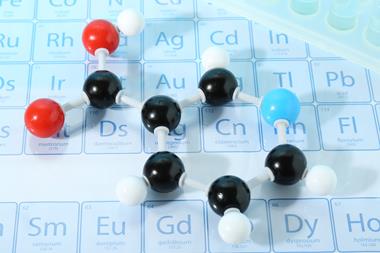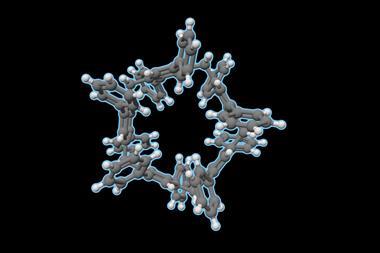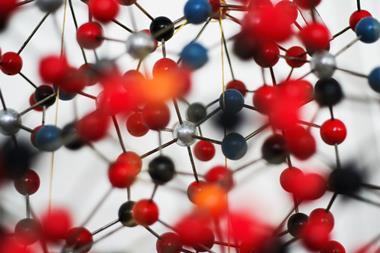UK chemists have devised a precise process for building carbon chains a link at a time that packs in more side groups than biologically-derived molecules can.1 Using the approach, Varinder Aggarwal’s University of Bristol team has explored how the links’ stereochemistry – the direction their side groups point in – controls overall chain shape. ‘We have the ability to exquisitely control the length of the carbon chain and its stereochemistry,’ Aggarwal tells Chemistry World. The team therefore hopes their ‘assembly line’ could become a powerful tool in tailoring organic molecule structures and shapes.
The process grew out of Aggarwal’s synthesis of the insect pheromone faranal in 2009.2 At one point on its long, relatively straight chain faranal has two methyl side groups on adjacent carbons. Methods producing this arrangement with a high level of control over stereochemistry were limited, so the Bristol chemists sought to create a better one. They turned to a reaction where lithiated carbamates added on to – or homologated – boronic esters, precisely directing which of the two possible stereoisomers would form.
Because this reaction’s product is also a boronic ester, they could do two successive homologations, producing the adjacent methyl groups in the right orientation without time-consuming purification in-between. ‘We asked ourselves: what’s the limit of this multiple homologation chemistry?’ Aggarwal recalls.
Adding carbons ad infinitum?
Four homologations was the answer at first. The method would add more than one link to some molecules, and fail to add to others, and the lithiated carbamate building blocks contained 3% of the wrong stereoisomer. The resulting impurities were extremely difficult to remove, and grew exponentially at each step.
Aggarwal’s team therefore switched from a carbamate to a benzoate, which reduced the amount of the unwanted stereoisomer to just 0.1%. They then found the right conditions to avoid under- or over-homologation. That involved reacting excess lithiated benzoate with boronic ester at low temperature, then maintaining the reaction for an hour at -42°C, in which time the excess reagent self-destructed. Simply filtering off the lithium benzoate salt by-product then gave the product at each homologation step without further purification. Combined with washing the organic solution with water after every third step, this approach got the chemists to nine homologations. Using it, they assembled three chains with methyl groups on each carbon atom that were 94–96% pure, yielding 46–58% of the maximum possible amount.
‘Remarkably the samples are calculated to contain not a single molecule of the wrong enantiomer,’ says Jonathan Clayden from the University of Manchester, UK, who wasn’t involved in the work. ‘This is the first practical demonstration that substituted carbon chains of a precise chosen structure can be built up from one end by a series of selective reactions without the need to purify intermediates.’
‘You could probably do any number of homologations,’ Aggarwal underlines. ‘It would just be limited by the physical properties of the molecule being generated.’
Conformation bias
Aggarwal’s team chose the three molecules that rolled off this assembly line to explore the idea that methyl side groups control the shape of naturally occurring carbon chains. And whereas molecules made by living things typically only have methyl groups on every other atom in a chain, the chemists could now explore a more extreme case. They found using the same methyl group stereoisomer on every atom formed linear conformations, while alternating the isomers formed coiled ones.
Detailed understanding and control of this phenomenon could help design bioactive molecules, Aggarwal hopes. ‘Some antibiotics, for example, have got a polar head group and a lipophilic tail that has a number of methyl groups along it that control its conformation. If you can bias the molecule so that it spends more of its time in the shape required for activity, then binding to the receptor will be a lot stronger, making it more active.’
Thanks to its potential in tailoring chain conformations, Adriaan Minnaard from the University of Groningen, the Netherlands, calls Aggarwal’s ‘highly sophisticated iterative synthesis’ an ‘important contribution’. ‘Although it has been well-realised that the shape of acyclic polyketides and terpenes is very important for binding and recognition, this is difficult to study due to the flexibility of these compounds,’ he says. ‘This novel approach can relax this problem.’























No comments yet